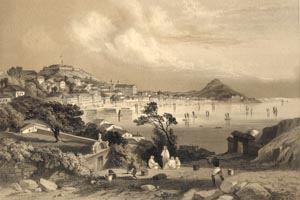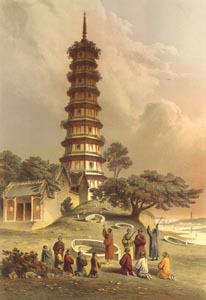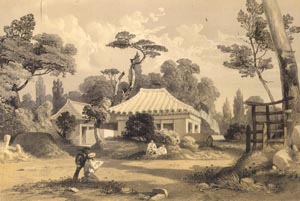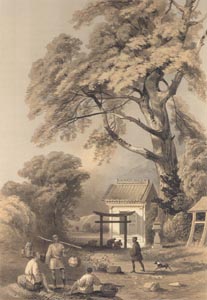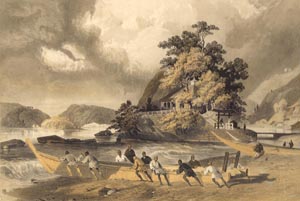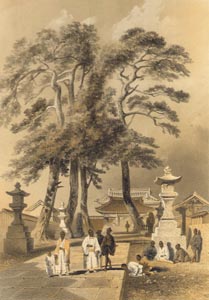Plate 10
Graphic Scenes of the Japan Expedition
Lithographs by William Heine - 1856
|
The Perry Expedition: General Information : Related Books/Pubs The Lithographs: Characteristics : Condition : Listing : Buying Order On-line: Lithograph Price List : Book Price List ABE Book List: BaxleyBooks Inventory on ABE Special Interest Books/Art: ~ K. Ogawa - Color Collotypes and Books/Prints ~ T. Hasegawa - Color Woodblock Books ~ Shimbi Shoin - Art Reproduction Books ~ Tamamura/Takagi, Kobe - Color Collotype Books ~ Georges Bigot - Etchings & Art ~ Keisuke Serizawa - Calendar Folios & Art ~ Woodblock Printing - Process & Miscellaneous Books ~ Japanese Woodblock Prints ~ Blackie the Photographer - Okinawa Photo Essay Books Meiji Era - Japan Views & Images (Price Lists & Information): ~ Albumen Photos : Chromolithographs ~ Colored Albumen Photographs (from Brinkley Books) ~ Stereoviews : Kazumasa Ogawa Collotypes ~ CDV - K. Ogawa : CDV - Other : Cabinet Cards ~ Glass Slides, "Magic Lantern" - Hand Colored ~ Fujiya Hotel, Miyanoshita PayPal Accepted: Pay for Purchases with PayPal Buying Books: Our Book Buying Interests BaxleyStamps: Main Page : Ryukyu Stamps : Japan Stamps Copyright and Fair Use Policy is here.
|
Plate 10, Grave-Yard at Simoda, Dio Zenge
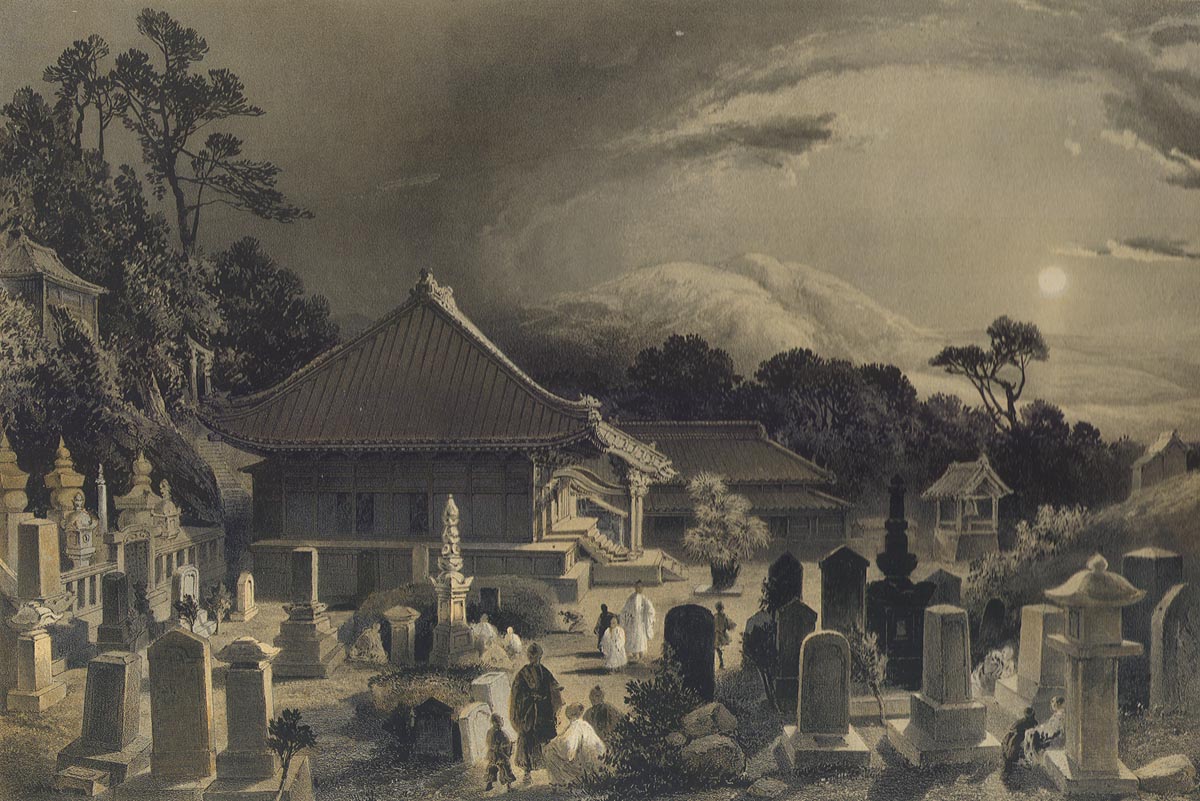
Click here for full picture with margins
|
Lithograph Type: Tinted lithograph on gray paper
Index
Plates 1~10
Introduction (Text Only)
Plate #1 - Portrait of Commodore Perry
Plate #2 - Macao from Penha Hill
Plate #3 - The Pagoda of Wampoa - Colored
Plate #4 - Old China Street in Canton - Colored
Plate #5 - Kung-twa at Lew-Chew
Plate #6 - Mia, the Roadside Chapel at Yoku-hama
Plate #7 - Temple of Ben-teng, in the Harbor at Simoda
Plate #8 - Street and Bridge at Simoda
Plate #9 - Temple of Ha-tshu-man-ya Tschu-ro, at Simoda
Plate #10 - Grave-yard at Simoda, Dio Zenge
Image Area: This is the measurements for the frame box that surrounds each image.
|
|
If you have material to sell, please visit this page: Buying.
George C. Baxley
Perry Expedition to Japan Books & Lithographs |

